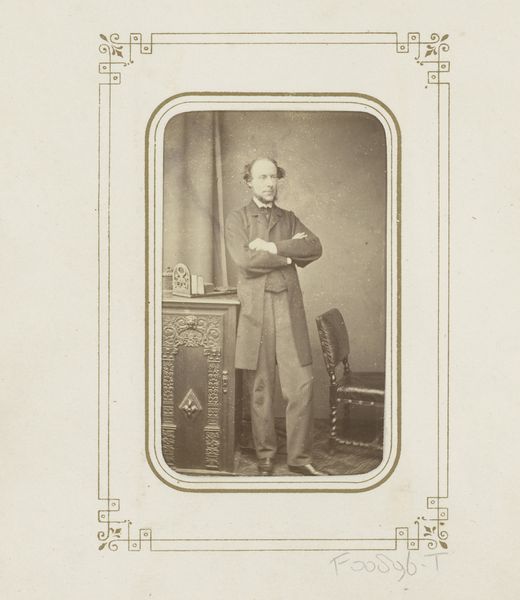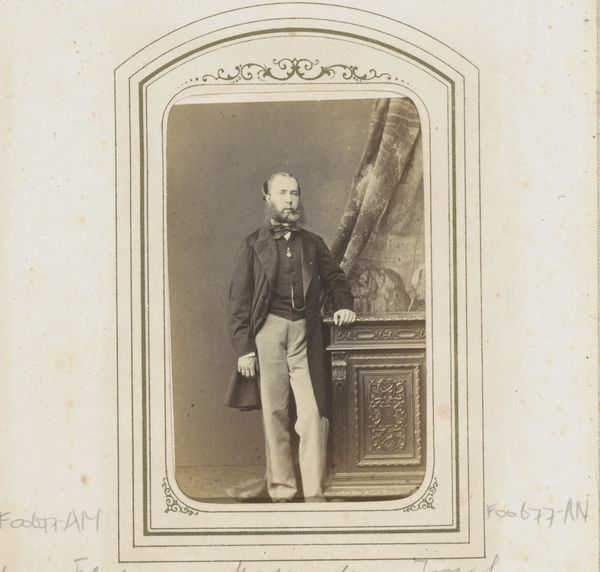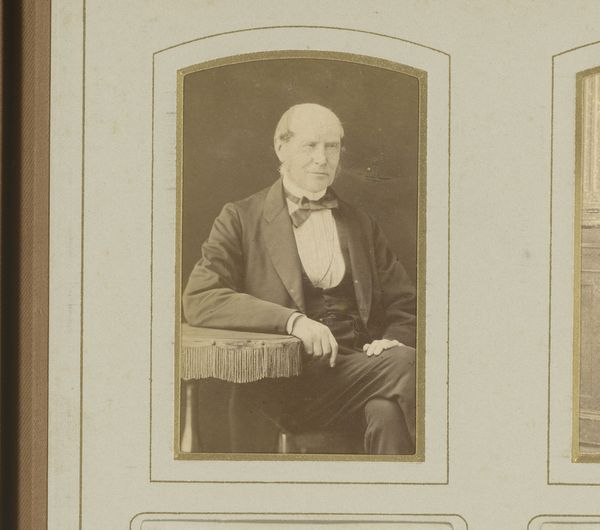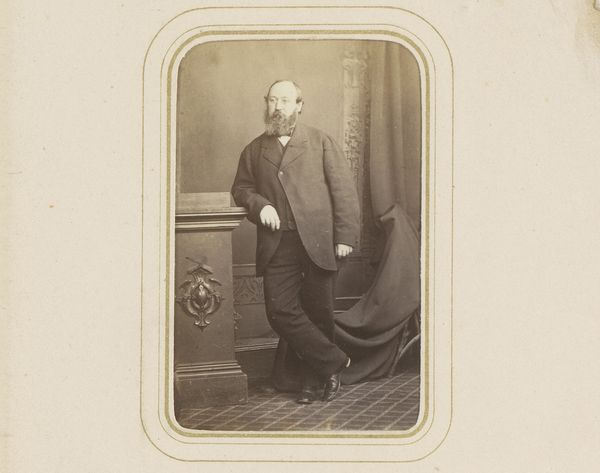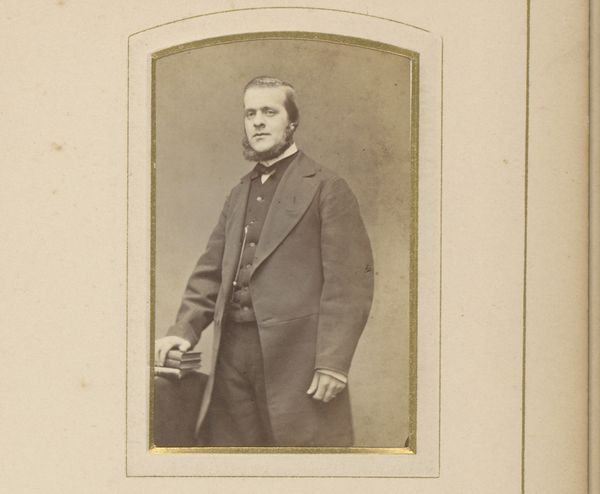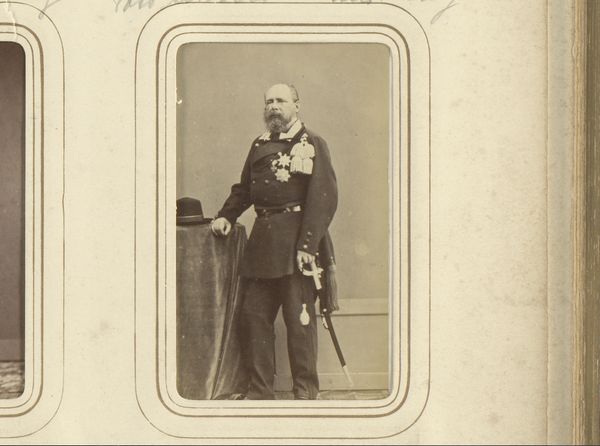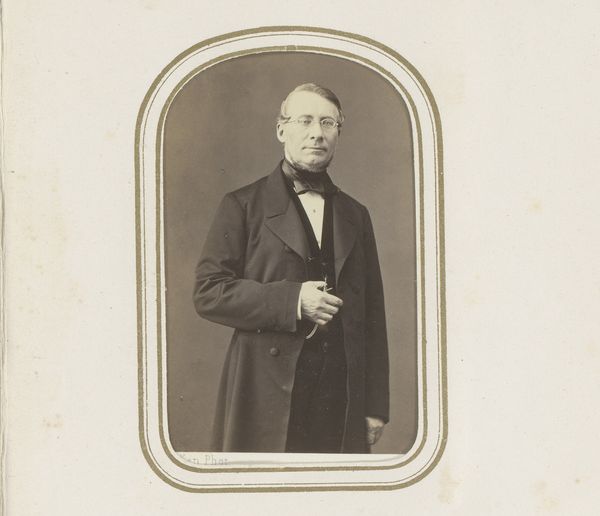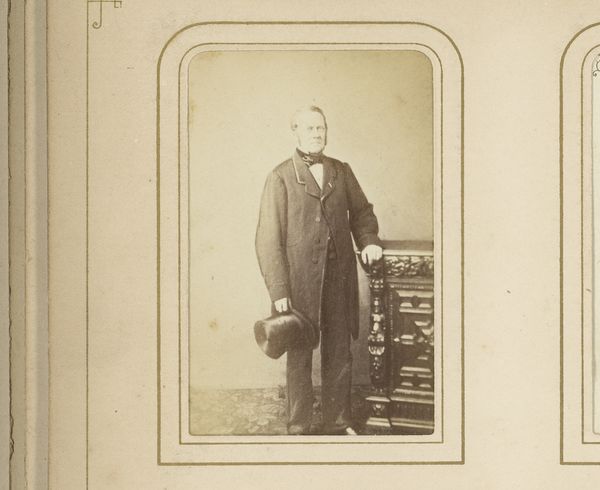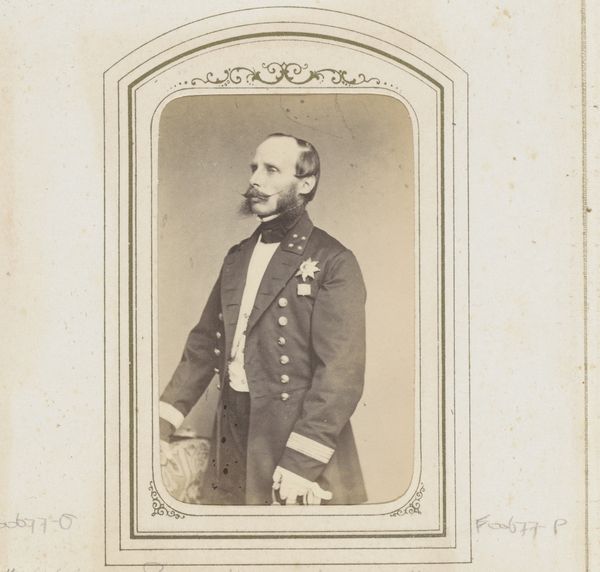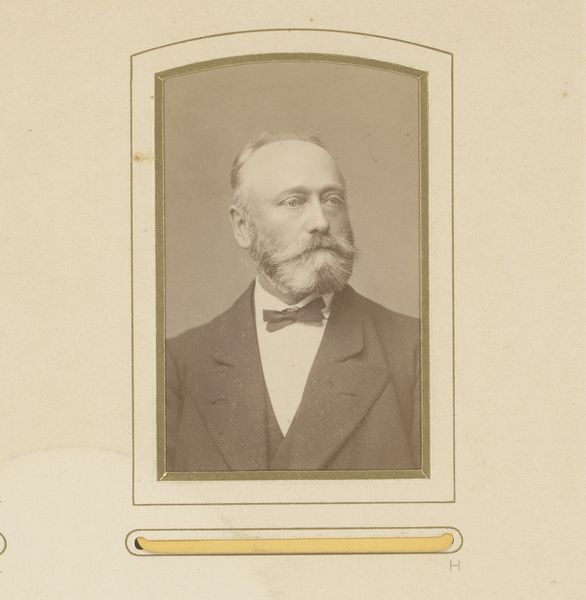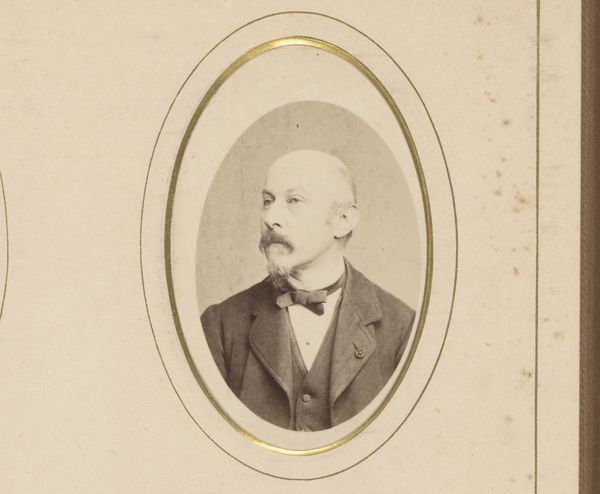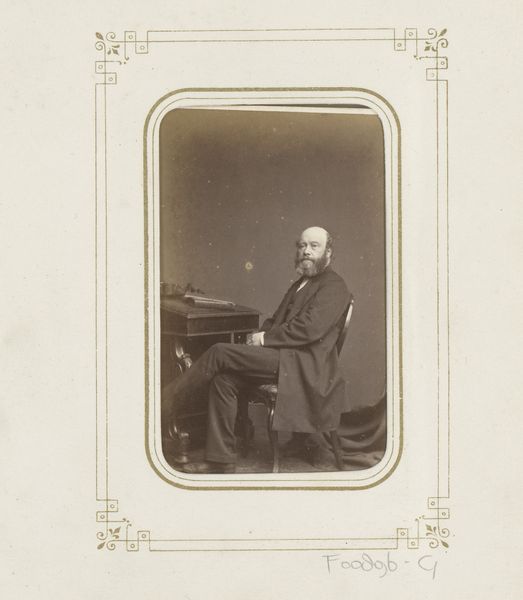
Portret van Prins Hendrik van Oranje-Nassau, prins der Nederlanden 1860s - 1870s
0:00
0:00
photography
#
portrait
#
photography
#
historical photography
#
19th century
Dimensions: height 83 mm, width 52 mm
Copyright: Rijks Museum: Open Domain
Editor: Here we have an interesting photograph, "Portret van Prins Hendrik van Oranje-Nassau, prins der Nederlanden" from the 1860s or 70s by Johann Schäfer. It has such a formal feel to it; what do you see in this piece? Curator: This photograph presents Prince Hendrik in a carefully constructed public role. Notice the rigid posture and ornate military attire, and the smaller, framed portrait, also rigidly posed; this speaks volumes about the representation of power in the 19th century. How do you think this image would be used and perceived by the public at the time? Editor: Well, the fact that it’s a photograph suggests a wider distribution than a painted portrait, so it could almost be a form of propaganda, displaying the Prince's authority to a larger audience. It’s interesting that a second smaller portrait is featured; what would that imply? Curator: That's a key point. It hints at the careful construction of lineage, legacy and continuity. It highlights that visibility was power in a time of nascent media culture. Editor: It really does underscore the way imagery shapes public perception, even back then. I'd assumed "propaganda" to be an element much later in history, but it's obviously at play in these kinds of portraits too. Curator: Exactly. Studying the public role of art through images like these sheds light on the social and political context that governed the artist's vision and influenced the spectator's reception of their artworks. Editor: Thank you. This was enlightening; looking at the image as propaganda and not only as art, opens a whole new area for discussion.
Comments
No comments
Be the first to comment and join the conversation on the ultimate creative platform.
